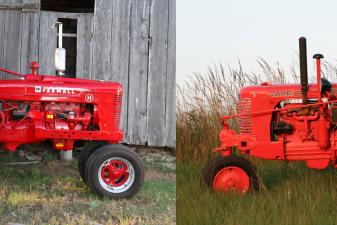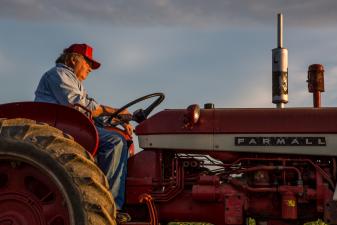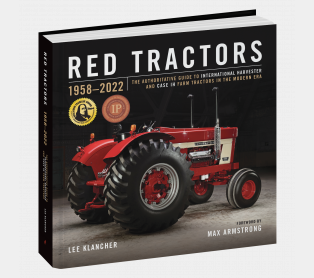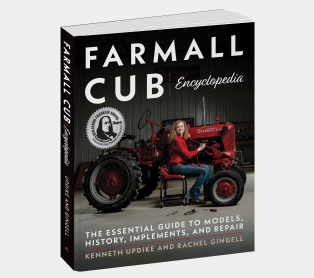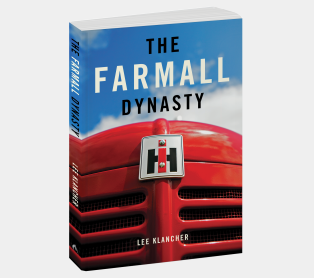Farmall-Land: A Vision on the Plains
This article was originally published as a feature in the Ageless Iron section of Successful Farming magazine, where Lee Klancher is a regular contributor.
I first met Jerry Mez in a phone interview done for a profile I wrote about him, parts of which are excerpted below. His hard-working background, family roots in teaching, and Midwestern values struck a nerve with me, and I liked him right away. Not long after that, I went to his museum, Farmall-Land, to take photographs of some of his tractors for my book, Red Tractors 1958–2022, and we struck up a friendship.
One of my most memorable encounters with Jerry came on a sunrise shoot at an old farmstead near his museum in Avoca, Iowa. In the surprisingly cold August morning, the wind was blowing at 20 miles an hour, and the wind chill was hovering right about freezing. My dad happened to be passing through Avoca on his way back to Wisconsin, and he gamely volunteered to get up early to help with the morning shoot.
We all stood out in the dark and cold—Jerry in shorts, which he prefers—and the bitterly cold weather gave the morning a flair of adventure. At that time, I used large eight-foot silk umbrellas to filter the light on my flash heads. The big umbrellas make lovely light—they also catch wind like a sail, requiring a person to hold them in place when shooting outdoors. Dad and Jerry struggled to hold the giant umbrellas in the wind as best they could, freezing in unseasonable weather and making jokes about the ridiculousness of all this suffering for a simple picture. All three of us laugh about that morning to this day.
For meeting Jerry and having that experience, among many more, I owe my profession a debt. I hope you enjoy this brief profile of a good man with the courage and passion to make his dream come true.
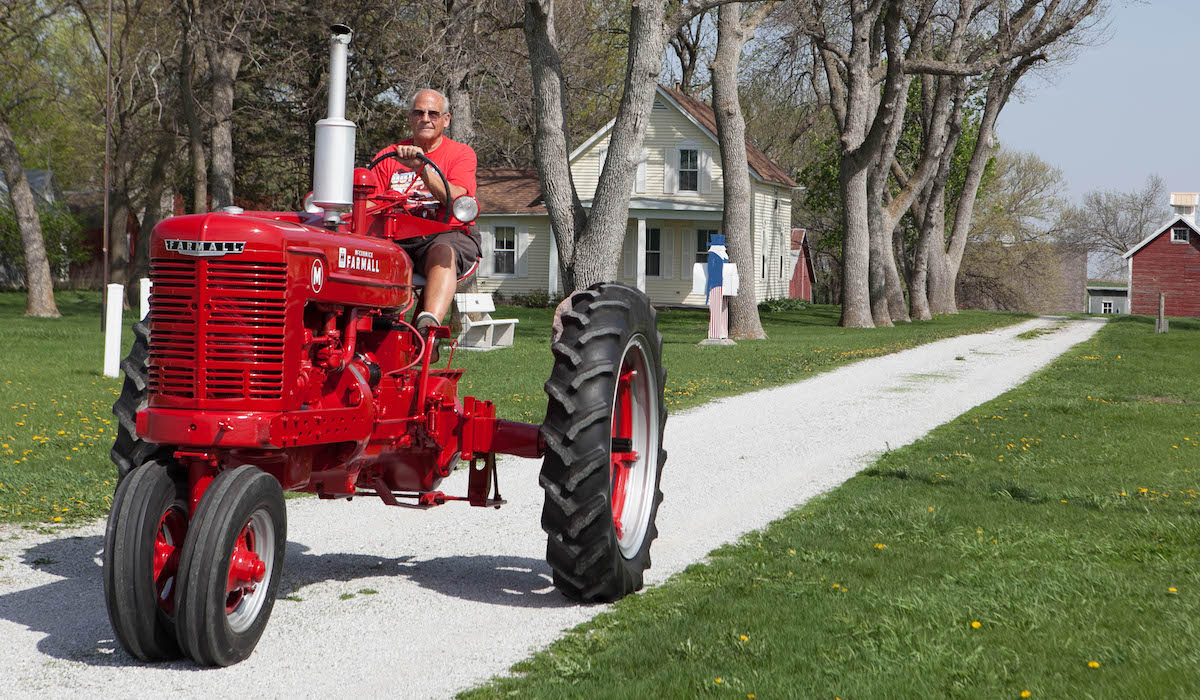
Here is Jerry with one of his favorite machines, a 1939 Farmall M. Photo by Lee Klancher
Barrel west on Highway 80 until the forested bluffs of eastern Iowa give way to a rolling billiard table of farm fields and the radio stations dwindle to country, gospel, and classic rock and you’ll find the small town of Avoca. The home of 1,582 souls is a farming community in Iowa’s southwestern corner that lays claim to a weekly newspaper, a Dollar General, actor Richard Beymer (Twin Peaks), and the nicest Motel 6 in America.
Jerry Mez has spent most of his life in Avoca. His father, Max Mez, had been a schoolteacher in Midland, Nebraska, before moving to Avoca to found Avoca Implement in 1943. Jerry was three years old at the time. By the time he was five, Jerry was sweeping floors in the dealership. By the time he was eight, he was driving a tractor downtown to get the mail (something which the local police eventually forbade).
What he wanted to do was live in Avoca and work in the tractor dealership. But there were some things Jerry needed to do before he followed his path.
Shortly after college, Mez married his wife, Joyce. He was drafted into the Army, and had to leave his wife, Avoca, and the dealership for two years of service, with thirteen months of that in Korea. Shortly after returning home, he went to work at Avoca Implement.
After a short stint as the IH dealership bookkeeper, Jerry took over as the shop foreman, a position he held from 1965 to 2005. “I liked the shop,” Mez said. “That’s where I started and that’s where I finished.”
Jerry Mez's Farmall collection includes full-sized tractors as well as miniature replicas. Photo by Lee Klancher
Not long after Mez came back from the military, a retiring farmer traded five mint condition Farmall F-20s in at Avoca Implement. Max Mez hadn’t seen anything like this in his twenty years at the dealership. “Dad suggested to me that I should keep a couple of those tractors just to remind me what he used to sell and what it was like when I first came back,” Mez said. “That’s what started it.”
From that day forward, when an interesting trade came in, Mez stashed it away. He started having his shop guys restore the machines when things were quiet at the dealership. The guys in the shop would do most of the mechanical work. Mez would spend his evenings and weekends painting.
“I probably painted thirty or thirty-five of them,” Mez said. “I could go down and spend a couple of hours on Sunday afternoon and complete a paint job.”
As the years passed, the collection grew and grew. Mez wanted to display the tractors at some point, and he would joke with the staff that when they all retired, they would work in his tractor museum. When a prime piece of real estate just off Interstate 80 became available, Mez decided to live his dream. He purchased the several acre plot, which sat on top of a hill with a nice view of the farmland below.
Farmall-Land has anything and everything a red tractor connoisseur would ever want. Photo by Lee Klancher
In 2005, Mez sold Avoca Implement and Greenfield Implement to Titan Machinery, and he opened Farmall-Land in 2006. The museum is a 26,500 square-foot metal building filled with more than 150 International and Farmall tractors as well as thousands of bits of memorabilia, including pedal tractors, toys, literature, pulling tractors, and more.
The number of machines is remarkable, and the scope of the collection is astounding. The tractors are from the entire range of IH history, with an early 1917 Mogul 8-16 up to the last tractors produced by IHC. A large memorabilia collection is scattered throughout the space, grouped into display cases and shelves. Equally incredible is the lack of as much as a tiny speck of dust. The tractors and collectibles are immaculate.
While Jerry isn’t at the museum every day, he’s there most of them. He likes to stop out and talk tractors with visitors. He still does his own mowing, and the staff said he still pushes a broom around a fair amount as well. Jerry was pushing a broom in a dealership when he was five years old. It comes as no surprise that he’s still doing it, happily tidying up his shrine to red tractors and loving the life that landed right there in front of him.
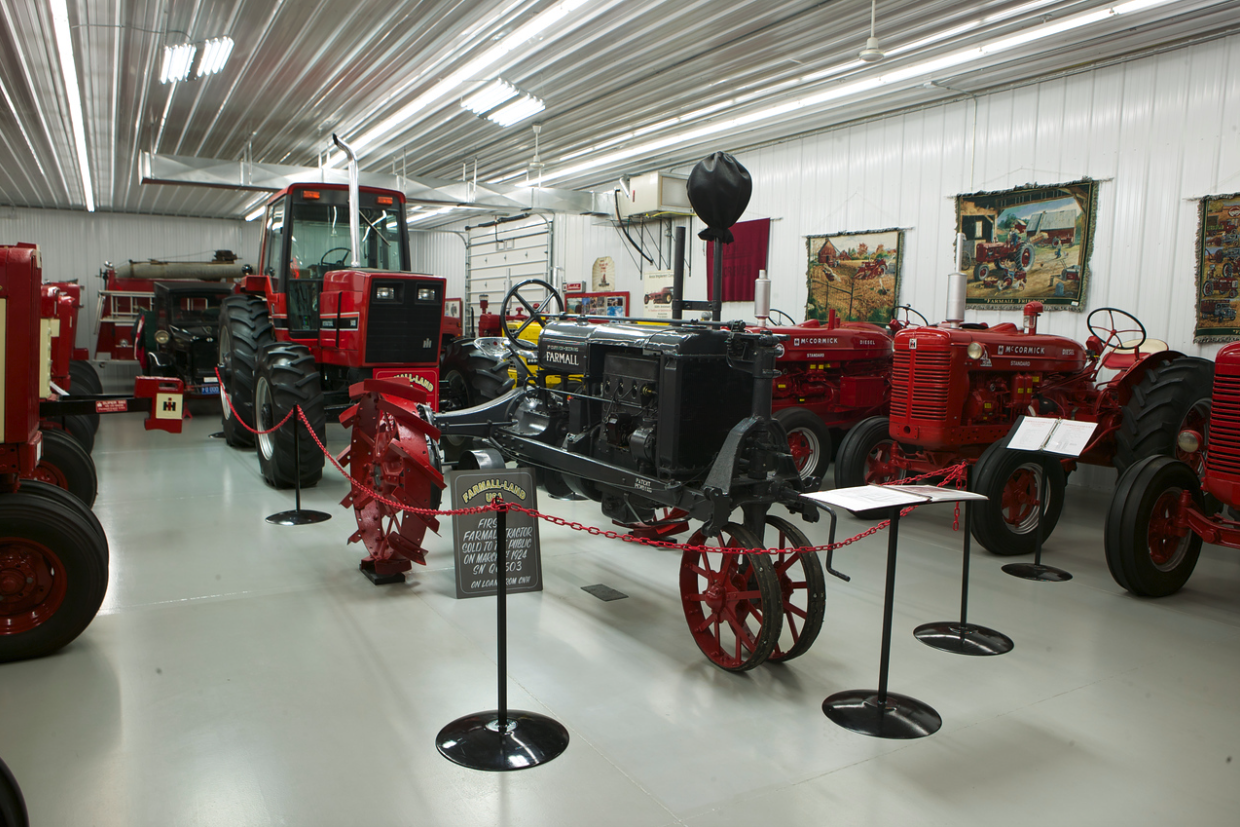
Mez's collection includes the first Farmall sold, shown here in front, with the last Farmall built sitting behind it. Photo by Lee Klancher
If you would like to read more stories like this one, check out the Related Books linked below.


